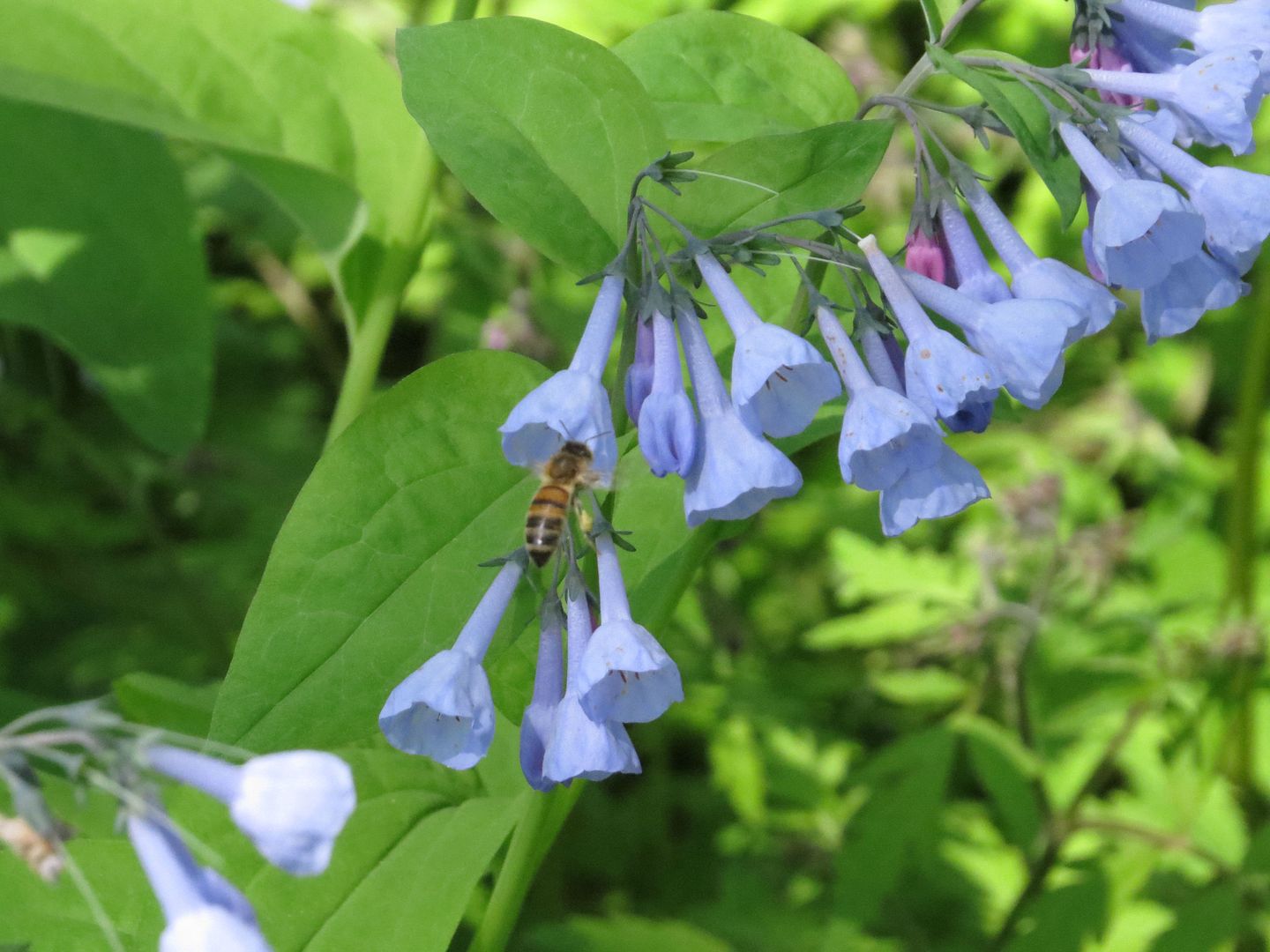I did a second visit to the Mt. Cuba Center this past weekend. A week prior to that was their yearly Wildflower Celebration. Most of the wildflowers hadn't opened yet or at least very few of the individual plants had flowers, but most at least had one flower open somewhere in the gardens, including Twinleaf and Trout Lily to give you an idea of how early the blooming was. Overall though there weren't enough flowers to make for a dramatic impact as I was hoping.
I'm happy to report that there were more flowers open this past Saturday, and the spring gardens will probably be at their peak this up coming weekend May 8 - 10, 2015. Any longer then that and I'd fear the Virginia Bluebells will be past their prime as well as many of the Trilliums.
It was a bright sunny day and I was on the lookout to see what the honeybees were working.
While I'm sure they were busy nectarine on Maples and early Mints and Magnolias, there were a few of them partaking of the Virginia Bluebells.
Presumably they're mostly going after the pollen. Judging from the long tube shaped flowers I don't think the honeybees could reach the nectar all to well. Woodland Poppies were also blooming, which don't produce nectar at all and offer their pollen much more easily, so it's likely the little bit of nectar they can reach is what has them favoring this plant.
There were a few trying to find other ways into the flower to get at the richer stores inside. I didn't think to look for carpenter bee damage at the time.
Also just starting to really flower was Fernleaf Phacelia. This is easily one of the most under rated woodland plants. It's a biannual that requires cross pollination from separate plants to produce viable seed.... and yet what few nurseries bother to sell this plant, only sell it as the second year flowering form. It's a biannual! Just sell the seeds!
When you put a biannual in the ground it suddenly wants to put energy into producing its roots, instead of flowering and making seed... but there's a ticking clock that tells the plant it's time to die. This is a plant that needs to be planted at a specific time of year to stress it as little as possible.
Most beekeepers grow Phacelia tanacetifolia, which is a western annual that has a piss poor time reseeding in our eastern soils. The benefit of growing Phacelia bipinnatifida instead would be growing a species better suited to eastern conditions and having a nectar plant that grows in full shade.
When it does get established, it likes to spread it's seed like crazy. First year plants simply grow a rosette of leaves, and after the first winter they begin to flower and start the whole process all over again.
Jacob's Ladder was another one I noticed honeybees working but only on my prior visit. I didn't see any working it this weekend and I'm unsure why. Maybe it was the time of day?
In other bee related news I noticed several bumblebee queens swooping in amongst the leaf litter, inspecting places to start a nest. I'd have expected many species to already be past this stage. Where I am in New Jersey I'm starting to see the first workers out foraging. Perhaps this is one of the parasitic species looking to replace a queen.












